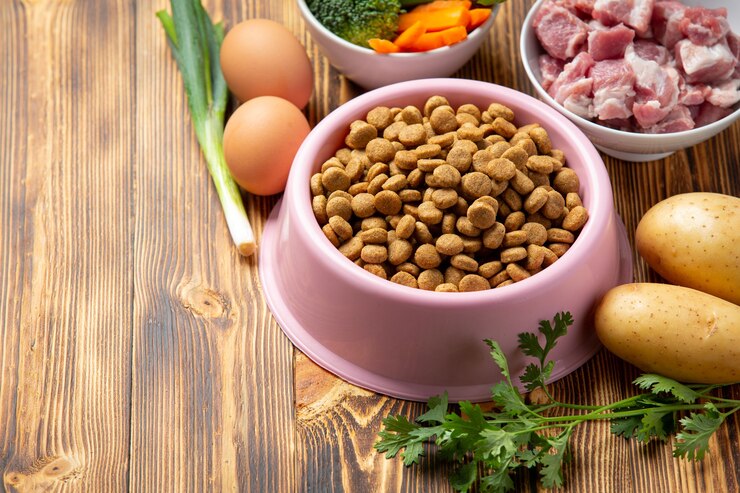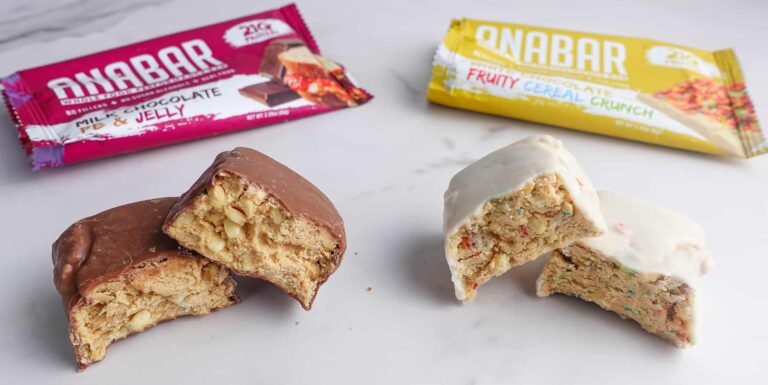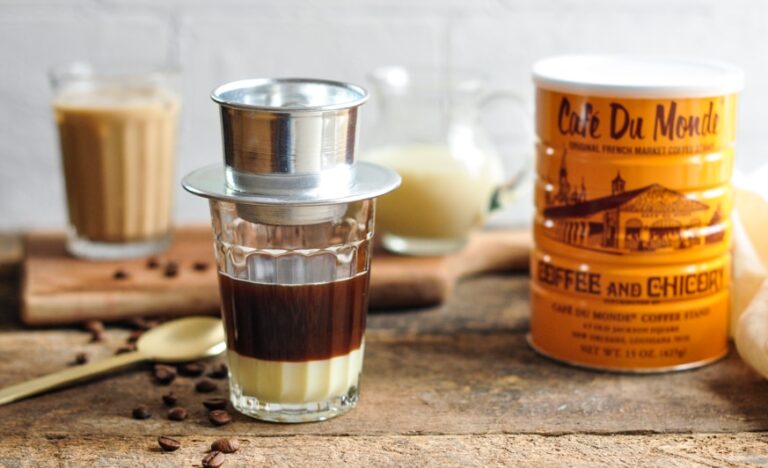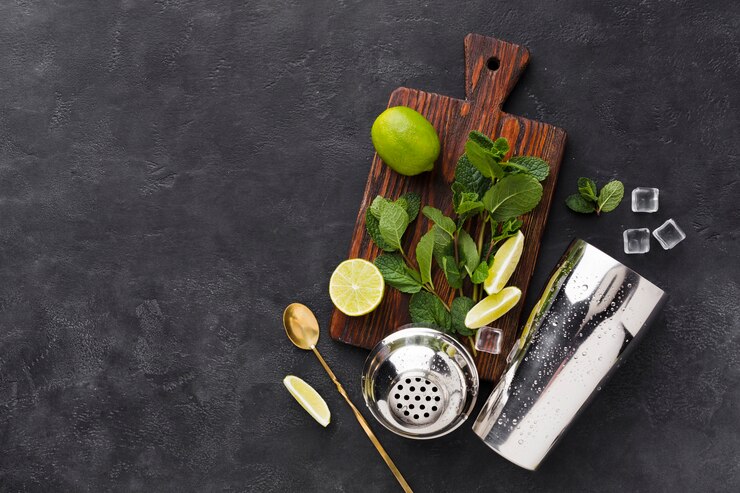How Raw Cat Food Can Improve Digestion, Immunity, and Overall Well-being
Are you looking for a way to enhance your cat’s health and well-being? Look no further than raw cat food! This natural and nutritious diet has been gaining popularity among pet owners who want the best for their feline friends. Raw cat food offers a range of benefits, from improving digestion to boosting immunity. In this blog post, we will explore how feeding your cat a raw diet can promote better overall health and provide tips on choosing, storing, and preparing raw cat food. Get ready to discover the key to unlocking optimal wellness for your beloved kitty companion!
The Benefits of Raw Cat Food
One of the major advantages of feeding your cat a raw diet is improved digestion. Cats are obligate carnivores, meaning their bodies are designed to process and derive nutrition from meat. Raw cat food closely resembles the natural prey that cats would consume in the wild, containing high-quality proteins and essential nutrients.
By providing your cat with a biologically appropriate diet, you can help support their digestive system. Raw food is easily digestible for cats, reducing the risk of gastrointestinal issues such as constipation or diarrhea. It can also promote healthy bowel movements and prevent hairballs.
Enhanced Immunity
A strong immune system is crucial for your cat’s overall health and well-being. Raw cat food provides vital nutrients like vitamins A, C, and E, which play key roles in maintaining a robust immune system. Additionally, raw diets typically contain beneficial enzymes and antioxidants that can further support immune function.
Feeding your cat raw food may also reduce the likelihood of allergies or sensitivities triggered by artificial additives commonly found in commercial pet foods. With strengthened immunity, your feline friend will be better equipped to fend off infections and illnesses.
Well-being
When it comes to our pets’ well-being, we want them to thrive rather than merely survive. By nourishing them with a balanced raw diet packed with essential nutrients like omega-3 fatty acids and amino acids, you can contribute to their overall vitality.
Raw cat food has been associated with numerous benefits beyond digestion and immunity alone. Many pet owners report shinier coats, healthier skin condition, increased energy levels, improved dental health (as chewing on bones helps clean teeth), decreased odor from waste matter due to fewer fillers consumed – just to name a few!
Incorporating raw food into your kitty’s diet may even lead to better weight management as it tends to contain fewer carbohydrates compared to processed kibble options often filled with grains and fillers.
Improved Digestion
One of the key benefits of feeding your cat a raw food diet is improved digestion. Cats are obligate carnivores, which means their bodies are designed to digest and process meat more efficiently than plant-based foods. Raw cat food closely resembles what cats would eat in the wild, providing them with the ideal balance of nutrients for optimal digestion.
When cats consume raw meat, their digestive systems work more efficiently to break down and absorb the nutrients. Raw cat food contains natural enzymes that aid in digestion, helping to alleviate common issues such as constipation or diarrhea. This can lead to firmer stools and less odor from your cat’s litter box – a win for both you and your feline friend!
Additionally, raw cat food is generally lower in carbohydrates compared to commercial kibble or canned food options. This can be beneficial for cats who have difficulty processing high amounts of carbohydrates, reducing the risk of digestive upset or weight gain.
Feeding your cat a raw diet also promotes better gut health by introducing beneficial bacteria into their system. These good bacteria help maintain a healthy balance in their gut flora and support proper nutrient absorption.
Incorporating raw bone-in meats into your cat’s diet can provide natural dental benefits as well. Chewing on bones helps remove plaque buildup on teeth while stimulating the production of saliva, which aids in digestion.
By switching to a raw diet, you may notice improvements in your cat’s overall digestion – from reduced hairballs to fewer instances of vomiting or stomach discomfort after meals. Remember that every feline is unique, so it may take some time for them to adjust fully.
Always consult with your veterinarian before making any changes to ensure it aligns with your individual pet’s needs and dietary requirements.
Enhanced Immunity
Proper nutrition is key to supporting a cat’s immune system, and raw cat food can play a significant role in boosting their immunity. Raw diets are packed with essential nutrients, enzymes, and antioxidants that help strengthen the immune response.
By feeding your cat raw food, you provide them with natural sources of vitamins A, C, and E – all important for maintaining a healthy immune system. These vitamins act as powerful antioxidants that protect cells from damage caused by free radicals.
Raw cat food also contains beneficial bacteria and enzymes that support gut health. The gut is home to a large portion of the immune system. When the digestive system functions optimally, it enhances overall immunity.
Additionally, raw meat provides essential amino acids necessary for building antibodies and white blood cells – both crucial components of the body’s defense against pathogens.
Feeding your feline friend a diet rich in raw ingredients can give their immune system the boost it needs to fight off infections and diseases more effectively. Transitioning to raw cat food may be just what your furry companion needs for enhanced immunity!
Overall Well-being
Ensuring the overall well-being of your feline friend is crucial for their health and happiness. And one way to support their well-being is by feeding them a raw cat food diet.
Raw cat food provides a range of benefits that contribute to your cat’s overall well-being. It contains natural and unprocessed ingredients that are easier for cats to digest compared to highly processed commercial pet foods. This can help prevent digestive issues such as constipation or diarrhea, promoting better digestion.
Additionally, raw cat food is packed with essential nutrients like vitamins, minerals, and amino acids that support optimal immune function. By boosting their immune system, you’re giving your furry companion the best chance at fighting off diseases and infections.
Furthermore, a balanced raw diet can improve your cat’s energy levels and promote healthy weight management. It provides all the necessary nutrients in biologically appropriate proportions, helping them maintain an ideal body condition.
Moreover, feeding raw also encourages natural behaviors such as chewing on meaty bones or tearing through muscle tissue. These activities provide mental stimulation for cats while satisfying their instinctual need to hunt and eat prey-like meals.
By prioritizing your cat’s overall well-being through a raw food diet rich in wholesome ingredients, you are setting them up for a healthier and happier life!
Choosing and Storing Raw Cat Food
Choosing and storing raw cat food is an important aspect of providing a nutritious diet for your feline friend. When deciding on the best raw cat food, there are several factors to consider. First, it’s crucial to choose a brand that uses high-quality ingredients sourced from reputable suppliers. Look for options that contain a balanced blend of muscle meat, organs, and bones to ensure your cat receives the necessary nutrients.
Additionally, take into account any specific dietary requirements or sensitivities your cat may have. Some cats may do better with certain protein sources or grain-free options. Consulting with your veterinarian can provide valuable guidance in this regard.
Once you’ve selected the appropriate raw cat food, proper storage techniques are essential to maintain its freshness and prevent bacterial growth. Store the food in sealed containers or packaging designed specifically for raw pet food. It’s recommended to keep it frozen until ready to serve in order to preserve its nutritional value.
Remember to thaw only the amount of food needed for each meal and discard any leftovers after 24-48 hours as bacteria can quickly multiply at room temperature.
By carefully choosing and storing raw cat food, you’re ensuring that your furry companion receives optimal nutrition while minimizing potential health risks associated with improper handling or storage methods.
Factors to Consider When Choosing Raw Cat Food
When it comes to choosing the right raw cat food for your furry friend, there are several factors you should consider. First and foremost, check the ingredients list carefully. Look for high-quality protein sources such as chicken, turkey, or beef. Avoid foods that contain fillers, artificial preservatives, or by-products.
Next, consider your cat’s specific dietary needs. Some cats may require a grain-free diet due to allergies or sensitivities. Others may benefit from added supplements like omega-3 fatty acids or probiotics. It’s important to consult with your veterinarian to determine what is best for your individual cat.
Another factor to take into account is the sourcing and quality of the ingredients used in the raw cat food. Ideally, you want a brand that uses human-grade meats and organic produce whenever possible. Additionally, look for products that undergo rigorous testing for safety and quality assurance.
Consider the type of raw cat food that will work best for you and your feline companion. There are different options available including frozen patties or nuggets, freeze-dried formulas, or homemade diets using a variety of fresh ingredients.
By considering these factors when choosing raw cat food for your pet, you can ensure they receive a nutritionally balanced diet tailored to their specific needs while promoting optimal health and well-being.
Proper Storage Techniques for Raw Cat Food
Storing raw cat food properly is essential to maintain its freshness and prevent the growth of harmful bacteria. Here are some key techniques to keep in mind.
It’s important to store raw cat food in the refrigerator at all times. This helps to slow down bacterial growth and preserve the nutrients in the food. Be sure to place the raw cat food in sealed containers or resealable bags before storing them in the fridge.
Additionally, it’s crucial to separate raw cat food from other foods to avoid cross-contamination. Keep it away from cooked meats or any human food items that may contain harmful pathogens.
To further ensure safety, always thaw frozen raw cat food in a controlled manner. Avoid leaving it out on countertops where temperatures can fluctuate, as this increases the risk of bacterial growth. Instead, thaw frozen portions overnight in the refrigerator or use a cold-water bath if you need quicker results.
Remember not to refreeze partially thawed raw cat food as this can compromise its quality and increase microbiological risks. It’s best to only defrost what your feline friend will consume within 24 hours.
By following these proper storage techniques, you can maintain both the safety and nutritional value of your furry friend’s raw diet!
Feeding Instructions for Raw Cat Food
When it comes to feeding your beloved feline friend a raw cat food diet, there are a few important factors to keep in mind. First and foremost, it’s crucial to determine the appropriate daily portions for your cat based on their age, weight, and activity level.
A general guideline is to feed adult cats approximately 2-4% of their body weight per day. Kittens may require a higher percentage due to their rapid growth rate. However, every cat is unique, so consulting with your veterinarian can help ensure you’re providing the right amount of food.
To add variety and extra nutrients to your cat’s diet, consider incorporating fresh toppers such as finely chopped fruits or vegetables. This can provide additional fiber and vitamins while also tempting picky eaters.
It’s worth noting that transitioning your cat from a traditional commercial diet to raw food may take time and patience. Gradually introduce small amounts of raw food into their meals until they are fully transitioned.
Remember that maintaining proper hygiene is essential when handling raw meat products. Wash all utensils and surfaces thoroughly after preparing meals for your cat.
By following these feeding instructions for raw cat food, you’ll be taking an important step towards improving your furry friend’s overall health and well-being!
Recommended Daily Portions
Feeding your cat a raw food diet comes with numerous benefits, but it’s crucial to ensure they’re getting the right amount of food each day. Determining the recommended daily portions for your feline friend is essential to maintain their overall health and well-being.
The exact quantity of raw cat food needed may vary depending on factors such as age, weight, activity level, and underlying health conditions. It’s always best to consult with your veterinarian or a feline nutritionist for personalized guidance.
As a general guideline, adult cats typically require about 2-4% of their body weight in raw food per day. For example, if your cat weighs 10 pounds (4.5 kilograms), you would feed them approximately 3-6 ounces (85-170 grams) of raw cat food daily.
It’s important to divide this portion into two meals per day to ensure proper digestion and prevent overeating. This feeding schedule mimics their natural hunting behavior in the wild.
For kittens or lactating cats, the recommended daily portions will be higher due to their increased energy needs during growth or nursing. Again, consulting with an expert can help determine the ideal quantity for these specific life stages.
Remember that every cat is unique, so monitoring their body condition and adjusting portion sizes accordingly is crucial. You want them to maintain a healthy weight without becoming overweight or underweight.
In addition to providing the recommended amount of raw food each day, consider incorporating fresh “toppers” into your cat’s meals for variety and added nutrients. Toppers like small pieces of cooked meat or steamed vegetables can enhance taste while increasing nutritional value.
Adhering to appropriate portion sizes ensures that your furry companion receives all the necessary nutrients without excessive calorie intake which could lead to obesity-related issues down the road
Incorporating Fresh Toppers for Variety and Added Nutrients
When it comes to feeding your cat a raw food diet, incorporating fresh toppers can be a great way to add variety and boost their nutrient intake. Fresh toppers are additional ingredients that you can mix in with the raw cat food to enhance its taste and nutritional value.
One option for fresh toppers is vegetables. Cats may not naturally gravitate towards veggies, but they can still benefit from them. Leafy greens like spinach or kale provide important vitamins and minerals such as vitamin A and K. You can finely chop these greens and mix them into your cat’s meals.
Another option is adding fruits like blueberries or diced apples as an occasional treat. Fruits offer antioxidants and fiber which aid digestion. Make sure any fruit you give your cat is safe for feline consumption.
Protein-rich additions like cooked eggs or small amounts of cooked fish also make excellent fresh toppers for added nutrition. These protein sources offer essential amino acids that support muscle development and overall health.
Remember, always introduce new ingredients gradually so your cat’s digestive system has time to adjust. Keep track of how well they tolerate each new addition by monitoring their stool consistency and overall energy levels.
By incorporating fresh toppers into your cat’s raw food diet, you’ll not only keep mealtime exciting but also ensure they receive a wide range of nutrients for optimal health!
Additional Supplements to Boost Cat’s Health
When it comes to ensuring your cat’s optimal health and well-being, incorporating additional supplements into their diet can be highly beneficial. Two key supplements that can significantly boost your cat’s overall health are bone broth and goat milk.
Bone broth is a nutrient-rich liquid that is packed with essential vitamins, minerals, and amino acids. It not only supports digestion but also helps strengthen the immune system. The collagen found in bone broth promotes healthy joints and improves skin and coat condition.
Goat milk is another fantastic supplement for cats. It contains high levels of calcium, which helps promote strong bones and teeth. Additionally, goat milk provides probiotics that support healthy digestion by maintaining a balanced gut flora.
Introducing these supplements into your cat’s diet can be as simple as adding them to their meals or using them as occasional treats. Always ensure that you source high-quality bone broth and goat milk from reputable suppliers who prioritize natural ingredients without any additives or preservatives.
Remember to consult with your veterinarian before introducing any new supplements to your cat’s diet to ensure they are suitable for their specific needs. By incorporating these additional supplements into their routine, you’ll help boost their overall health naturally!
The Benefits of Bone Broth for Cats
Bone broth is not just a trendy food for humans; it can also provide numerous benefits for our feline friends. Made by simmering animal bones and connective tissues, bone broth is packed with nutrients that can support your cat’s overall health.
One of the main benefits of bone broth is its ability to promote joint health in cats. The collagen found in the bones and connective tissues helps to improve their flexibility and reduce inflammation, making it particularly beneficial for older cats or those with arthritis.
In addition to joint health, bone broth can also aid in digestion. It contains gelatin, which acts as a natural digestive aid and helps soothe an irritated stomach. If your cat has a sensitive stomach or suffers from occasional digestive issues, adding bone broth to their diet may help alleviate these symptoms.
Another advantage of bone broth is its immune-boosting properties. It contains essential amino acids such as arginine, glutamine, and cysteine, which play vital roles in supporting a healthy immune system. By incorporating bone broth into your cat’s diet on a regular basis, you can help strengthen their immunity and make them more resilient against common illnesses.
Feeding your cat bone broth is easy too! You can either make homemade bone broth using high-quality bones or purchase pre-made versions specifically formulated for pets. Just be sure to choose options without added salt or seasonings that could be harmful to cats.
Remember that while bone broth offers many benefits for cats, it should still be given in moderation as part of a balanced diet alongside other nutritious foods. Consult with your veterinarian before introducing any new supplements or dietary changes to ensure they are appropriate for your furry friend.
The Importance of Goat Milk in Cat’s Diet
When it comes to providing a balanced and nutritious diet for our feline friends, we often overlook the benefits of incorporating goat milk. Goat milk is not only delicious but also packed with essential nutrients that can greatly benefit your cat’s overall well-being.
One of the key advantages of goat milk is its high digestibility. Cats, especially those with sensitive stomachs or digestive issues, can easily tolerate and absorb the proteins and fats present in goat milk. This makes it an excellent alternative to cow’s milk, which some cats may have difficulty digesting.
Goat milk is also rich in vitamins and minerals that are vital for a cat’s health. It contains significant amounts of calcium, phosphorus, potassium, vitamin A, and vitamin B6 – all essential nutrients for maintaining healthy bones, teeth, muscles, and immune function.
Furthermore, goat milk contains natural antibodies called immunoglobulins that help boost your cat’s immune system. These antibodies play a crucial role in fighting off infections and preventing diseases.
Incorporating goat milk into your cat’s diet doesn’t have to be complicated either. You can serve it as a standalone treat or mix it with their regular meals as an occasional supplement. Just make sure to choose fresh organic goat milk from reputable sources to ensure its quality.
Remember to introduce any new food gradually into your cat’s diet while closely monitoring their reaction for any signs of allergies or sensitivities. As always consult with your veterinarian before making any changes to your pet’s diet.
Adding goat milk as part of a balanced raw cat food diet can provide valuable nutritional benefits for our furry companions’ optimal health.
Ensuring Safe Handling and Preparation of Raw Cat Food
Safe handling and preparation of raw cat food is crucial to ensure the health and well-being of our feline friends. Here are some tips to help you navigate this process safely.
Always remember to wash your hands thoroughly before and after handling raw cat food. This simple step helps prevent the spread of harmful bacteria that may be present in the raw meat.
When it comes to preparing raw cat food, make sure you have a designated area for meal prep. This helps minimize cross-contamination with other foods or surfaces in your kitchen. Use separate cutting boards, knives, and utensils solely for raw cat food preparation.
It’s important to thaw frozen raw cat food properly. Avoid leaving it at room temperature for extended periods as this can promote bacterial growth. Instead, thaw the food in the refrigerator or using cold water baths while ensuring it remains sealed.
To serve the prepared raw cat food safely, use stainless steel or glass bowls rather than plastic ones which can harbor bacteria over time.
Clean all surfaces and tools used during preparation with hot soapy water immediately after use to prevent any potential contamination.
By following these safe handling practices, you can confidently provide your furry friend with nutritious meals without compromising their health. Keep reading for more information on resources available to support your transition into feeding a raw diet!
Safe Handling Tips for Raw Cat Food
Properly handling and preparing raw cat food is crucial to ensure the health and well-being of your feline friend. Here are some important tips to keep in mind when it comes to safe handling practices.
First and foremost, always wash your hands thoroughly before and after handling raw cat food. This helps prevent the spread of harmful bacteria that may be present in the meat. Additionally, make sure to clean any utensils or surfaces that come into contact with the raw food promptly.
When thawing frozen raw cat food, do so in the refrigerator rather than at room temperature. This slower thawing process helps maintain the integrity of the nutrients while minimizing bacterial growth. Avoid using a microwave as it can unevenly heat the food, leading to potential issues with digestion.
Another essential tip is to separate raw cat food from human consumables in your refrigerator and freezer. Storing them separately reduces cross-contamination risks, ensuring both you and your furry companion stay healthy.
Remember that cats have sensitive digestive systems, so only defrost what your pet will consume within 24 hours. Discard any leftover thawed portions as they can quickly become contaminated if left out too long.
By following these safe handling tips for raw cat food, you’ll provide your beloved feline with a nutritious diet while maintaining their overall health and safety!
Proper Preparation and Serving Methods
When it comes to feeding your feline friend raw cat food, proper preparation and serving methods are crucial for ensuring their safety and well-being. Here are some important tips to keep in mind:
Always handle raw cat food with care. Just like with any raw meat product, it’s essential to practice good hygiene. Wash your hands thoroughly before and after handling the food to prevent cross-contamination.
Next, make sure to thaw frozen raw cat food properly. It’s best to thaw it in the refrigerator overnight or use cold water if you need it quicker. Avoid using hot water as this can lead to bacterial growth.
When serving the raw cat food, ensure that all utensils and bowls used are clean and free from any traces of leftover food or bacteria. Stainless steel bowls are recommended as they are easy to clean and less likely to harbor harmful microorganisms.
To minimize the risk of contamination, serve only what your cat will eat within 30 minutes at room temperature. Discard any uneaten portions promptly.
Remember not to leave raw cat food out for extended periods or free-feed throughout the day as this increases the risk of bacterial growth.
By following these proper preparation and serving methods, you can provide a safe and nutritious meal for your furry companion without compromising their health.
Resources and Support for Transitioning to Raw Cat Food
When it comes to transitioning your cat to a raw food diet, you might find yourself seeking guidance and support along the way. Luckily, there are numerous resources available that can provide you with the information and assistance you need.
One valuable resource is websites dedicated to raw cat food. These sites offer a wealth of articles, guides, and even recipes specifically tailored to feline nutrition. They can help answer any questions you may have about transitioning your cat’s diet and provide tips on how to ensure they receive all the necessary nutrients.
In addition to online resources, there are also communities of like-minded individuals who share their experiences with feeding raw diets to their cats. Joining these communities allows you to connect with other pet owners who have already made the switch or are in the process of doing so. You can exchange ideas, ask questions, and gain valuable insights from those who have firsthand experience.
If you prefer more personalized support or guidance from professionals, consider reaching out to holistic veterinarians or animal nutritionists specializing in feline health. They can provide tailored advice based on your cat’s specific needs and help create a meal plan that best suits them.
Remember that every cat is unique, so what works for one may not work for another. It’s important to consult multiple sources when gathering information about raw feeding techniques before making any decisions regarding your furry friend’s diet.
By taking advantage of these resources and seeking support during this transition period, you can ensure that your beloved feline companion receives optimal care in terms of their nutritional needs.
Websites and Communities for Raw Cat Food Information
Websites and online communities can be valuable resources for cat owners looking to learn more about raw cat food. These platforms provide a wealth of information, support, and guidance from experts and fellow pet parents who have experience with raw feeding.
One popular website is “Raw Feeding Community,” which offers a comprehensive guide to transitioning cats onto a raw diet. They provide articles, recipes, and frequently asked questions to help educate and empower cat owners.
Another great resource is “The Raw Cat Food Forum,” where members can connect with like-minded individuals to share their experiences, ask questions, and receive advice on all aspects of raw feeding. This community fosters an open exchange of knowledge between seasoned raw feeders and those new to the concept.
For those seeking additional information on specific topics related to feline nutrition, websites like “Feline-Nutrition.org” offer in-depth articles written by veterinary professionals specializing in natural diets for cats. These sites often cover a range of topics including the benefits of raw food, how to balance nutrients properly, common misconceptions about feeding cats a raw diet, and much more.
By joining these online communities or exploring informative websites dedicated to raw cat food education, pet parents can gain valuable insights into the health benefits associated with this type of diet while also connecting with others who share the same passion for providing optimal nutrition for their feline companions.
Connecting with Raw Cat Food Enthusiasts
Are you interested in learning more about feeding your cat a raw food diet? There’s no better way to gain knowledge and support than by connecting with other raw cat food enthusiasts. The online world is filled with websites, forums, and social media groups dedicated to this topic.
When it comes to finding information on raw cat food, there are numerous websites that provide valuable resources. These sites often offer detailed guides on how to transition your feline friend to a raw food diet, as well as tips for selecting the best ingredients and recipes for homemade meals. Some even have calculators that can help you determine the right portion sizes for your furry companion.
For those who prefer a more interactive experience, joining online communities or forums can be incredibly beneficial. These platforms allow you to connect with like-minded individuals who share their experiences, advice, and success stories regarding their cats’ health on a raw diet. You can ask questions, seek guidance from seasoned veterans of raw feeding, or simply find comfort in knowing that others are going through similar journeys.
Social media platforms such as Facebook and Instagram also offer an abundance of groups specifically focused on raw cat food. By joining these communities, you’ll have access not only to helpful information but also inspiring photos of healthy cats thriving on their natural diets. It’s an excellent way to stay motivated and connected while gaining new insights into this alternative approach to feline nutrition.
Remember that every cat is unique and what works for one might not work for another. Connecting with fellow enthusiasts allows you the opportunity to gather different perspectives so that you can make informed decisions based on what resonates most with you and your beloved pet.
So why not take advantage of these resources available at your fingertips? Connect with other passionate individuals who understand the benefits of feeding cats a species-appropriate diet!
Conclusion
Incorporating raw cat food into your feline friend’s diet can provide a multitude of benefits. From improved digestion to enhanced immunity and overall well-being, feeding your cat a raw diet can be a game-changer for their health.
When choosing raw cat food, consider factors such as quality ingredients, balanced nutrition, and the specific needs of your cat. Proper storage techniques are essential to maintain freshness and prevent bacterial growth.
Feeding instructions for raw cat food include recommended daily portions based on your cat’s weight and size. You can also add fresh toppers for variety and added nutrients to ensure a well-rounded diet.
Supplements like bone broth and goat milk can further boost your cat’s health by providing additional nutrients and promoting hydration. These natural supplements have numerous benefits that support their overall vitality.
To ensure safe handling and preparation of raw cat food, follow guidelines for safe handling practices, including proper cleaning utensils after use. Serve the meal in clean bowls or dishes specifically designated for feeding time.
If you’re considering transitioning to a raw diet or need more information about it, there are many resources available online such as websites dedicated to educating pet owners about the benefits of raw feeding. Additionally, connecting with other like-minded individuals in communities focused on this topic can provide valuable insights and support during the transition process.
Remember that each individual is unique when it comes to dietary needs. Consult with your veterinarian before making any major changes in your cat’s diet or introducing new supplements.
By putting thought into what we feed our cats, we can help them thrive physically and mentally. Embracing the power of raw cat food not only enhances their lives but also strengthens our bond with these beloved companions.







